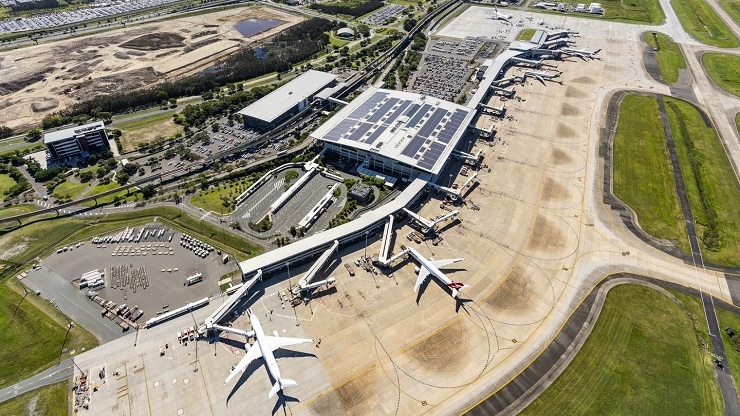Asia Pacific airport operators, working to decarbonize their operation, are turning to solar power as a solution.
Ken Conway, head of environment and sustainability of aviation consultancy Airbiz, says there is growing momentum towards onsite solar energy systems at airports as the whole aviation industry tries to reduce carbon emissions.
He says airports are focusing on sustainability by shifting away from dependence on fossil fuels and consuming less electricity.
“Around 200 airports globally have some form of renewable energy system in place currently, with solar being a prevalent and popular option,” adds Conway, who was speaking at a webinar sponsored by Chinese solar module manufacturer Trina Solar and organized by Smart Aviation Asia Pacific.
He says airports around the world, extending from the Arctic Circle to remote airports in the Pacific, are adopting solar.
“In terms of reducing carbon emissions, airports need to look into electricity as around 80% [of the airport’s CO2 emissions] are tied to purchases from the grid as well as aircraft operations,” Conway says, adding that he can see airports will transition from the grid to 100% renewable energy in future.
In his presentation, Conway also highlights some new ideas in development, involving solar technology, like solar runways and solar pavements. Although these are only at the concept stage, so far from reality.
However, he suggests solar could be installed on runway shoulders. Conway calculates that a 3,500m-long (11,483ft), 7.5m-wide runway would have 50,000m2 that could potentially be used for solar that would then power lighting systems or other airport operations.
He says airports with more than 20MW of solar onsite, integrated with battery storage systems, could deliver 30-35% of the airport’s electricity demand annually.
Speaking at the same event, Dhwaraknath Nagarajan, senior project manager electrical at Australia’s Brisbane Airport, says they have the largest airport solar system in the country. It is 6MW spread over five airport locations.
“With solar, we were able to defer capital expenditure on what we call the high voltage infrastructure that is required to run the airport electricity network. We were able to defer A$15 million (US$11 million) to A$20 million, because the peak load demand was managed by our solar system,” he says.
He says in future the airport may add more rooftop solar.
Ku Jun Heong, senior director of sales and marketing at Trina Solar Asia Pacific, says airports are the perfect location for solar electricity generating installations, due to the large flat surfaces on the ground and the rooftops of terminals, hangars and other buildings.
David Naismith, acting CEO and co-founder of Solgen Energy Group, an Australian construction and engineering company that specializes in large-scale solar projects, says: “An estimated 28% of energy in Australia came from renewables in 2021, of which solar accounts for 24% of all renewable energy generation,” he says.
Picture Source: Trina Solar
Related Stories:
Cambodia Airports’ Move Towards Net Zero Carbon Emissions Goal (18 November 2021)

